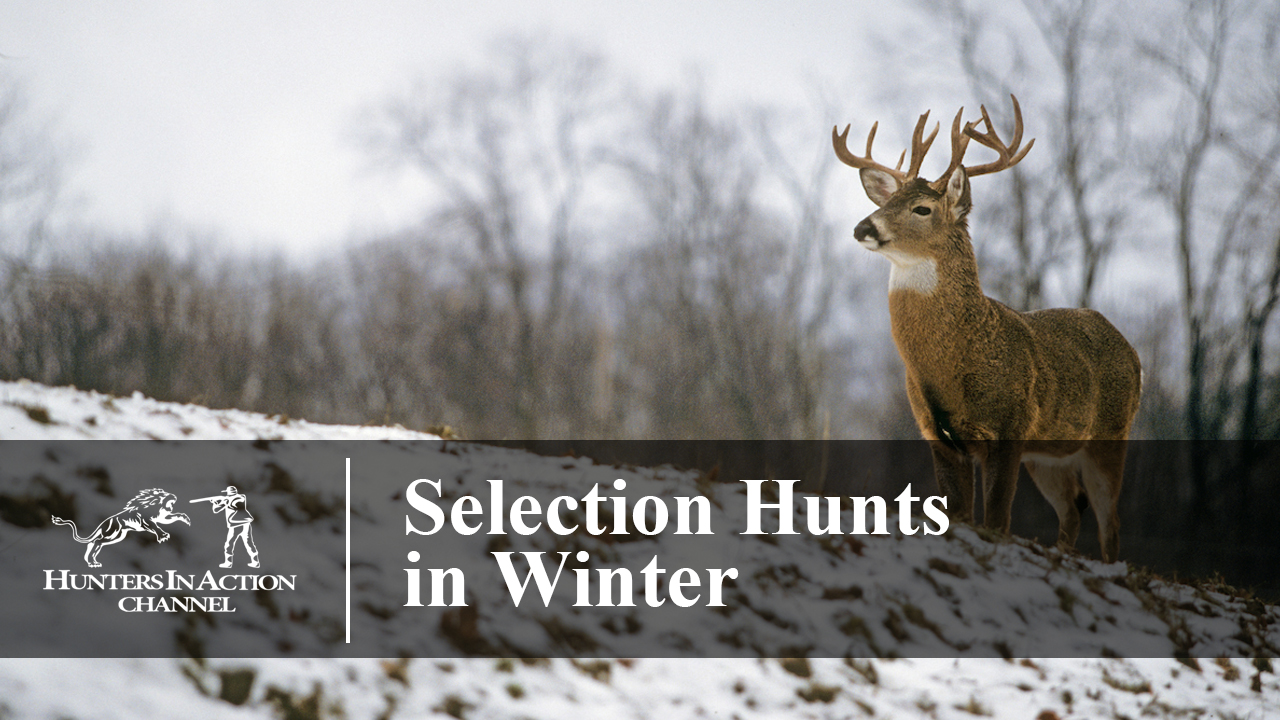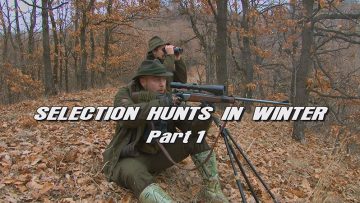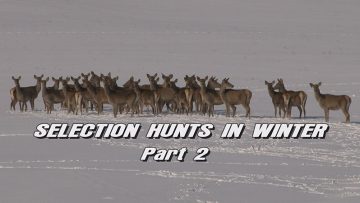In areas where deer hunting is a major part of the work of game management, usually in early October after the red deer rut has finished, hunts known as selection hunts take place.
One important function of selection hunts is to reduce the deer population to an optimal size by culling the hinds and calves. From a professional hunting standpoint, however, the main aim of a selection hunt is to ultimately improve the quality of stag antlers.
If there are too many females relative to the number of males living in a particular area, then the laws of nature will not prevail, according to which only the strongest males gain access to mating.
In the case of an excessively large population of females, stags with weaker or undesirable traits are easily able to find mates without competing for hinds. This, in turn, propagates their undesirable traits. In this unwanted situation, the new stags will undoubtedly inherit these poor genes.
If the number of individual females is kept to a low, optimized level through careful selection hunting, the result will be that during the rutting season, when the stags are struggling against rivals, only the best males will gain mating rights and in the long run, this leads to the improvement of the deer population.
The basic task of a proper selection hunt or culling, which targets the optimal age composition and correct male-to-female ratio, is to strive for improvement in the quality of antlers.
In a professional, selective culling, primary considerations are made for age, health status and physical condition of the animals. A hunter cannot go wrong if he chooses to shoot older animals, or those that are in a weaker condition than average, due to visible sickness or injury.
The female group typically consists of an experienced, healthy lead hind leading both calves and fawns. This position is not gained from winning a power struggle but rather the others instinctively follow this leader because the leader is older, has excellent health, can make quick decisions and has good reaction skills. The leading hind and her calf have strong traits, they should always be spared.
One can often see 3-member deer families, which are usually made up of a leading hind and one of her calves, as well as her young calf from the previous year.
These small trios should preferably be spared since if the leader of this group is self-confident enough to provide security for the little group, chances are that those traits of a “good” mother, will rub off on the young ones in her group. Lone individual animals however, that are seen at this time are always suspicious because in general they are somehow wounded or ill and have been abandoned from the group.
During the culling when choosing which hinds to shoot, first and foremost a hunter should take the health of the animal into consideration. Choosing to take an individual animal whose growth and development is stunted, or an animal which is sick, is a basic condition for the formation of a healthy population. Deer which have been hit by cars, injured by hunters or wild dogs, or those who have fallen victim to golden jackals must be released from further suffering. Weakened individuals have a very slim chance of surviving the hardships of the upcoming winter and many of them are likely will not live to see the spring. Those that do survive are likely to bear weak animals with less survival skills when they enter the world.
The intensity of the fallow rut in October should not be disturbed by taking a few does and fawns. During the reproduction period, the most important thing in terms of game management is that mature fallow buck hunts result in a successful take. Because of this, culling should therefore only begin after the mating season has ended. Like red deer, a sex ratio of 1:1 for fallow deer is also desired, and this ration is controlled by culling the appropriate number of does and fawns. On selection hunts, it is important to achieve the optimal age mix, which means that the greatest number of animals taken will be from the younger age group. Young bucks should only be taken if they are remarkably underdeveloped and/or have a mangy coat. The culling of deer is necessary to manage the population and for the most part, young does are the most recommended to be shoot. This is especially true because young does come into heat sooner than mature, older females and these young females bear fawns that are late in development and generally weaker than their peers in the group.
In the case of fallow deer, if you see the whole body of the animal, it is not difficult to distinguish the young females from the young bucks who have yet to grow antlers. The young bucks have a tuft of fur on their bellies and this clearly indicates the sex of the animal.
The wild boar is a very prolific and adaptive game species.
Due to extensive damage caused by the animal, domestic law permits the hunting of wild boar, without restrictions on age or gender, throughout the year. The very popular driven wild boar hunts play a significant role in reducing the boar population, but this type of hunting is not as useful for professional culling as hunts from blinds where it is much easier to judge and select the right animals.








